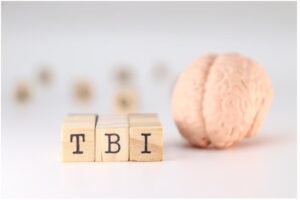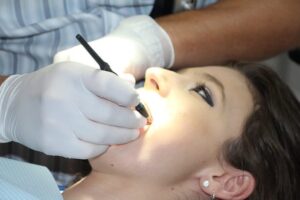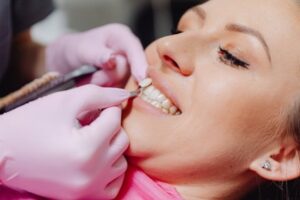Modern biology students spend a great deal of their classroom time gaining an understanding of the role of DNA in genetic inheritance and in a range of practical applications, including genetic testing, even of their own genes, crime scene analysis, and paternity testing. Thanks to the ubiquity of DNA in the science students encounter every day, most of them will develop at least a rudimentary understanding of how DNA works.
For students to make the leap in understanding from being able to recite facts about DNA learned in the classroom to using that knowledge to develop their own theories about how the world, however, requires hands-on experiences. Modern Biology makes giving your students those experiences easy.

When you incorporate Modern Biology into your curriculum, you give your students opportunities to develop a “feel” for DNA that goes beyond learning facts about DNA. Every experiment from Modern Biology makes your students develop their own hypotheses about how DNA works, and then gives them the opportunity to test those hypotheses in the lab.
With Modern Biology, your students don’t just learn science. They become scientists. And you are relieved of the hassle of finding reagents, laboratory specimens, and specialized equipment, plus you have a ready-made teaching guide for every laboratory experience.
Many Modern Biology experiments have become classics for teaching about DNA to students at all levels. Here are X.
Table of Contents
A Hands-On Experience of DNA
All of your students (well, almost all of your students) will at least know the term “DNA.” Students will recognize the familiar double helix. But what do students intuitively grasp about the folding of DNA, the multiplication of DNA, or the variations in the numbers of base pairs and the length of DNA?
Modern Biology helps you begin at the beginning with a simple, short, inexpensive experiment that involves manipulating actual DNA into visible strands.
This hands-on approach to DNA is suitable, of course, even for elementary school students. But for older students, it can be a gentle introduction to the formulation of hypotheses.
You can ask your students what they think the structure of DNA will be. Will it be a liquid? Will it be a solid? If it is solid, will it be hard, soft, gel-like, or stringy?
No novel scientific discoveries are likely to result from this exercise. But your students will have an opportunity to articulate their understanding of DNA, formulate testable questions, and find their answers in the lab. And even for this experiment, students will have an opportunity to record their thinking, their experiment, and their results in written, professional form.
Of course, all modern biology students must advance beyond a basic understanding of DNA.
Electrophoresis as a Tool for Teaching About DNA
Professional biologists have made some ambitious statements about what students need to learn about DNA and protein analysis. Here are two standards from the American Society for Biochemistry and Molecular Biology:
Students should be able to discuss the interactions between a variety of biological molecules (including proteins, nucleic acids, lipids, carbohydrates and small organics, etc.) and describe how these interactions impact specificity or affinity leading to changes in biological function.
Here’s another goal from the ASBMB:
Students should be able to discuss the interactions between the variety of biological molecules (including proteins, nucleic acids, carbohydrates, lipids, and small organics, and so on) and describe how these interactions impact specificity or affinity leading to changes in biological function.
Modern Biology’s suite of electrophoresis experiments empowers your students to reach these standards.
Your students can start with Modern Biology’s simplified experiments about determining relative length of strands of DNA, determining the molecular weight of a protein, and identifying sex-specific proteins.
Then your students can move on to their lessons in forensics, genetics, environmental preservation, public health issues and muchmore. Your students can examine the composition of the nucleosome. They can isolate nucleosomes from newly formed avian erythrocytes, isolate their DNA, and estimate the molecular weights of five histone proteins. They can run experiments involving the isolation of chromosomal proteins,
Capstone Experiences from Modern Biology
Modern Biology also provides experiments for your students that can integrate everything they learn in your classes and even in other classes. They will be able to move on to capstone experiences that they will find more challenging and a lot more fun.
Students can do actual genetic engineering, making a strain of E. coli that glows in the dark. They can build a bacterial computer. They can master basic skills of ELISA. Some students have even done publishable work with our exercise on sickle cell anemia .
Choose Modern Biology
Modern Biology does more than giving you a guidebook for nurturing young scientific minds. Modern Biology takes care of the drudgery of ordering, stocking, and keeping up with the supplies you need for each experiment. Each experiment comes with all the materials you need to succeed with the hands-on part of the exercise.
Experiments from Modern Biology are never mere demonstrations. They always require hypothesis formation for hypothesis testing. This means, your students must master basic concepts of biology to know what they are testing. You will always have an instructor guide for teaching each unit, and you will always have an easy way to review the results.
And, of course, every experiment from Modern Biology is teacher-tested and student-safe. Our experiments and our curricula are the teaching aids of choice for 80,000 American biology teachers who reach 500,000 students.




